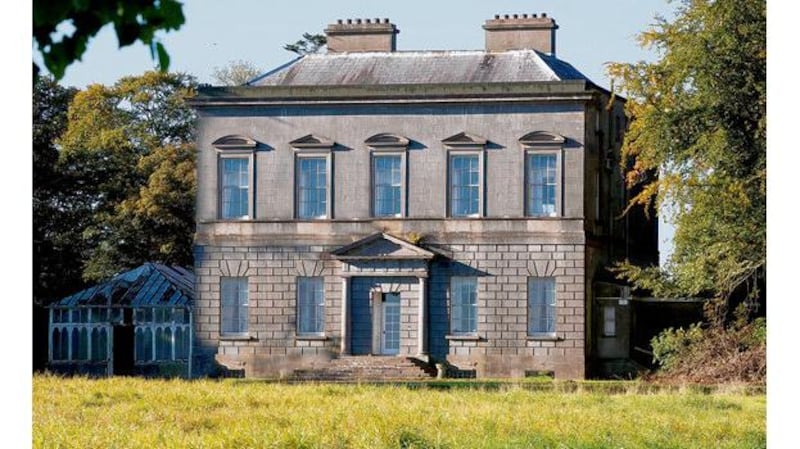I conducted a very unscientific poll last week. I asked some friends around the country – including a few farmers – to text me three words that come to mind when they think of the term “National Park”. A flurry of messages came back; if thrown into a word cloud, “nature”, “wilderness” and “protected” would all stand out.
What was never mentioned were the words “farming”, “farmland” or “livestock”. And yet, agriculture will be at the centre of Ireland’s newest National Park, Boyne Valley National Park, which will be created from the 552-acre Dowth Hall estate in Meath. Last month, the Irish State spent €11 million of public money to buy it from entrepreneur Owen Brennan, chief executive of global animal feed giant Devenish, and his wife Alice Stanton, who had bought it for €5 million in 2013.
National Parks in Ireland are relatively small compared to other European countries, and it’s been 25 years since the last park – Mayo’s Wild Nephin – was designated. Boyne Valley will be our seventh park, with the others including Killarney (1932), Connemara (1980), Glenveagh (1984), the Burren (1991), and Wicklow (1991).
The archaeological significance of Dowth is immense and justifies public ownership. Under the fields are layers of ancient landscapes, including two high-status medieval enclosures, a Bronze Age enclosure and Late Neolithic circular monuments. The archaeology reaches back 5,500 years with a burial chamber half the size of Newgrange, discovered in 2018 beside Dowth Hall, along with kerbstones covered in megalithic art. UCD archaeologists said it was Ireland’s most significant megalithic find in the last 50 years.
READ MORE
In its current form, the nature value of Dowth isn’t so unique. Between the acres of livestock-grazed pastureland, there are designated spaces for wildlife: native woodlands, hedgerows and species-rich grasslands, and the site is home to some endangered species of birds, such as Grey Partridge, Yellowhammer and Woodcock.
[ Archaeological revelations in Meath offer a historic opportunityOpens in new window ]
But the results of a recent nature survey are underwhelming; just seven bee species, 11 butterfly species and 12 per cent of bird species were recorded. The land includes 3.3km of frontage onto the River Boyne, a waterway with legal protection which has significant historical, mythical and archaeological relevance but is suffocating from excessive nutrient and organic pollution, mainly from agriculture, and needs urgent help. Nature restoration on a site as large as Dowth has exciting potential; it will take time and resources to make it happen.
The parks have no management plans, and their problems are deep: overgrazing by deer and sheep, wildlife crime and fire, invasion by invasive species, and climate change
Boyne Valley, like all of our parks, will fall under the responsibility of the National Parks and Wildlife Service. Along with the archaeology, the plan is to operate the park for farmland biodiversity research and education, with demonstration sites for agri-environment measures. These are all critically important, and farmers are fortunate to have a Government willing to pour public money into such an initiative, but is this what we want for our National Parks?
The first National Park was designated in Yellowstone in the United States in 1892, and it served as a framework adopted by countries worldwide, including Australia (1879), Canada (1885) and New Zealand (1887). Between 1909 and 1960, 36 were created in Europe, including the 11,000-acre Muckross Estate in Killarney, which the US energy and mining entrepreneur William Bowers Bourn generously donated to the Irish State in 1933.
At that time, the term “National Park” had a fuzzy meaning open to interpretation, and it wasn’t until 1969 that the International Union for Conservation of Nature (IUCN) set criteria still used today. Under this, National Parks are areas where nature and ecological integrity are protected, an entire ecosystem is present and not “materially altered” by human occupation and exploitation, and people can visit for spiritual, educational and recreational purposes.
Ireland’s parks, which are all owned by the State, are supposed to be managed under IUCN criteria, but given the lamentable condition of parts of Killarney, Glenveagh, Wicklow and Connemara in particular, you’d be forgiven for assuming this has not happened. The parks have no management plans, and their problems are deep: overgrazing by deer and sheep, wildlife crime and fire, invasion by invasive species, and climate change. Until recently, they didn’t even have managers focused solely on the park.

The NPWS, an organisation of dedicated staff, has been starved of funding by successive governments. But its fortunes have turned under Minister of State for Heritage Malcolm Noonan, who has led the agency’s reorganisation and has allocated significant funds to support its work. Although the NPWS budget remains small compared to the agency’s mammoth, ever-growing responsibilities, it’s a move in the right direction.
There is no statutory process for the IUCN designation of a National Park, and in Ireland, we have no legal framework to underpin the parks’ existence. Aside from the Wildlife Act, there are no specific laws to protect the unique wildlife within them. At the moment, a National Park is whatever the Government of the day wants it to be.
And so we might start with the basics: to establish a legal definition of “National Park” and a legal basis for the establishment and management of these facilities. These factors are necessary to have a coherent vision for our parks and how they operate. Are they large areas of near-pristine ecosystems where nature is protected and allowed to flourish? Spaces where we have the right to roam? Places at the heart of Ireland’s tourism offering? Farmed landscapes that incorporate nature?
Our National Parks say something about how we view and value the natural world, and they should be a source of pride for us all. Involving the public in a consultation to define what they are and how they should be managed is a critical first step.












